The environment has all but disappeared from political discourse as the world grapples with a pandemic. COVID-19 is seems to be our “payback” for the excesses of globalisation.
Where international institutions, the United Nations, and the EU have failed, the COVID-19 Coronavirus has succeeded. Not so long ago and despite Greta Thunberg’s hopes, President Trump’s disdain was enough to prevent the environmental crisis from being the number one political priority. Now that the new Coronavirus is here to stay, it is also having an effect on the environment, making us pause to think more about green issues.
The European Environment Agency estimates that air pollution causes more than 430,000 premature deaths in Europe every year. By mapping air pollution based on satellite observations, a strong reduction in the concentration of nitrogen dioxide produced as a result of road traffic and other fossil fuel combustion processes can be seen in Northern Italy, coinciding with the lockdown causing less traffic and industrial activities. The waters of the Grand Canal in Venice have not been this clear for years. According to NASA, since the epidemic broke out, atmospheric pollution in China has fallen sharply, thus saving thousands of people from premature death. The slowdown in economic activity will result in a drastic fall in greenhouse gas emissions into the atmosphere. Multitudes of political commitments and vast tomes of legislation have not been able to achieve the reductions we are now seeing.
A number of virological, epidemiological, and ethnographic arguments suggest that COVID-19 has a zoonotic origin. The pangolin, a species threatened with extinction due to poaching for both culinary purposes and traditional Chinese pharmacopeia, is now suspected of being the “missing link” in the transmission to humans of a virus that probably originated in a species of bat. Human predation of wild fauna and the reduction in habitats have thus ended up creating new interfaces that favour the transmission of pathogens, mainly viruses, to humans. Domesticated animals and wild fauna thus constitute a reservoir for almost 80% of emerging human diseases (SARS-Cov, MERS-CovV, Ebola). These diseases are all zoonotic in origin.
As if out of a Chinese fairy tale, the bat and the pangolin have taught us a lesson: within an increasingly interdependent world, environmental crises will become ever more intertwined with health crises. Questions relating to public health will no longer be confined to the secrecy of the physician’s consulting room or the sanitised environment of the hospital. They are now being played out in the arena of international trade, ports and airports, and distribution networks. Simply put, all human activity creates new interfaces that facilitate the transmission of pathogens from an animal reservoir to human. Environmental changes, such as the reduction in habitats for wild fauna and the intemperate trade in fauna, are the biggest causes for the emergence of new diseases.
With the explosion of the COVID-19 pandemic, the world appears to have changed abruptly. There is a distinct before and an after. Political responsibilities are having to be shouldered. Solidarity is rising up from the ashes. Businesses are adapting to the new constraints and suddenly discovering the virtues of a future circular economy. The financial sector is being forced to rethink its models. Will this unsettling strangeness end up plunging our contemporary societies into an unprecedented state of vulnerability? And could one say the same about climate change?
Some might think that these questions will fade into the background once the pandemic has been brought under control and we all return to business as usual. But it is this in particular that we have to fear. Numerous scientists and researchers are cooperating on a massive scale at universities and research institutes around the world. This health crisis must make us stop and think about how we deal with risks, how we assess them, and even how we talk about them. We need to move to a radically different social model for dealing with risk.
Over the centuries, pandemics have laid down markers between different eras of human society. We must not wait for this new health crisis to be resolved before thinking about a radically new society. We must define now a new integrative understanding of the multilevel biosocial pathways linking society, biology, health, and socio-economic attainment, for achieving the overarching objective of the UN Sustainable Development Goals: peace and prosperity for people and the planet, now and into the future.
Nicolas de Sadeleer is a professor of law and holds the Jean Monnet Chair at the University of Saint Louis in Brussels, Belgium.
Jacques Godfroid is a professor of microbiology at UiT – The Arctic University of Norway in Tromsø, Norway.
This article is published under a Creative Commons Licence and may be republished with attribution. The article was first published on:
